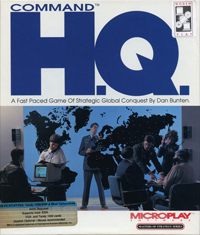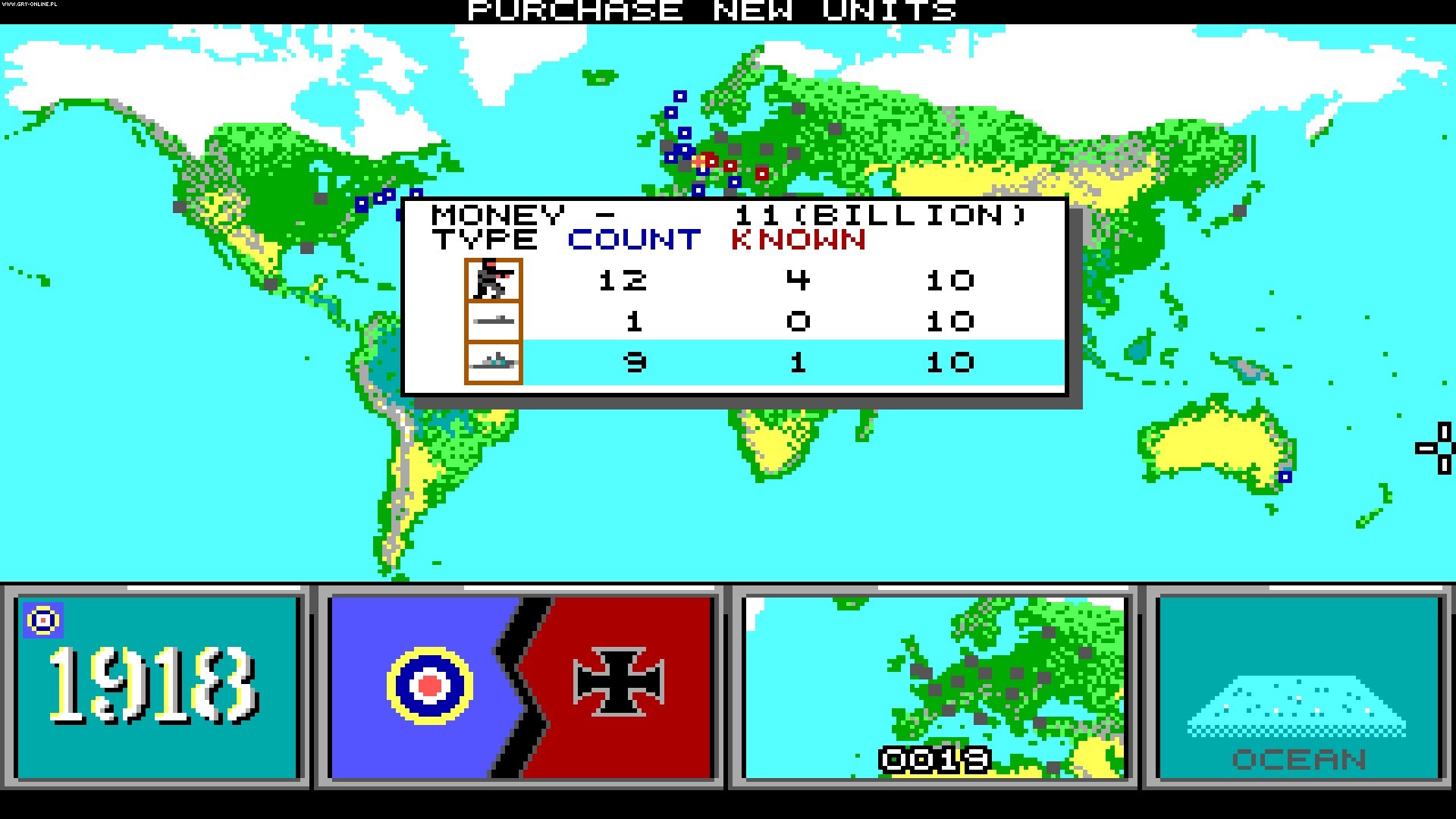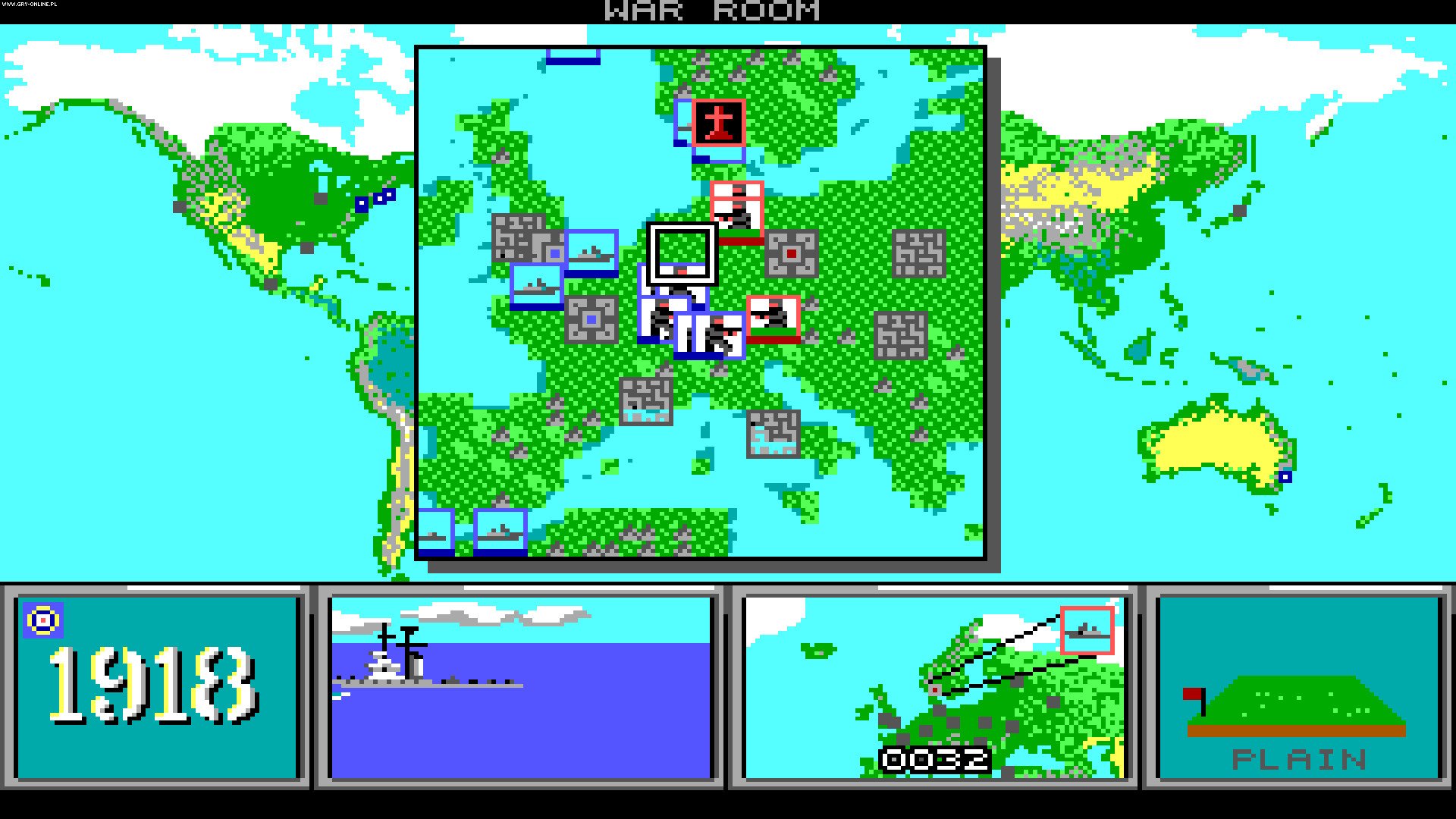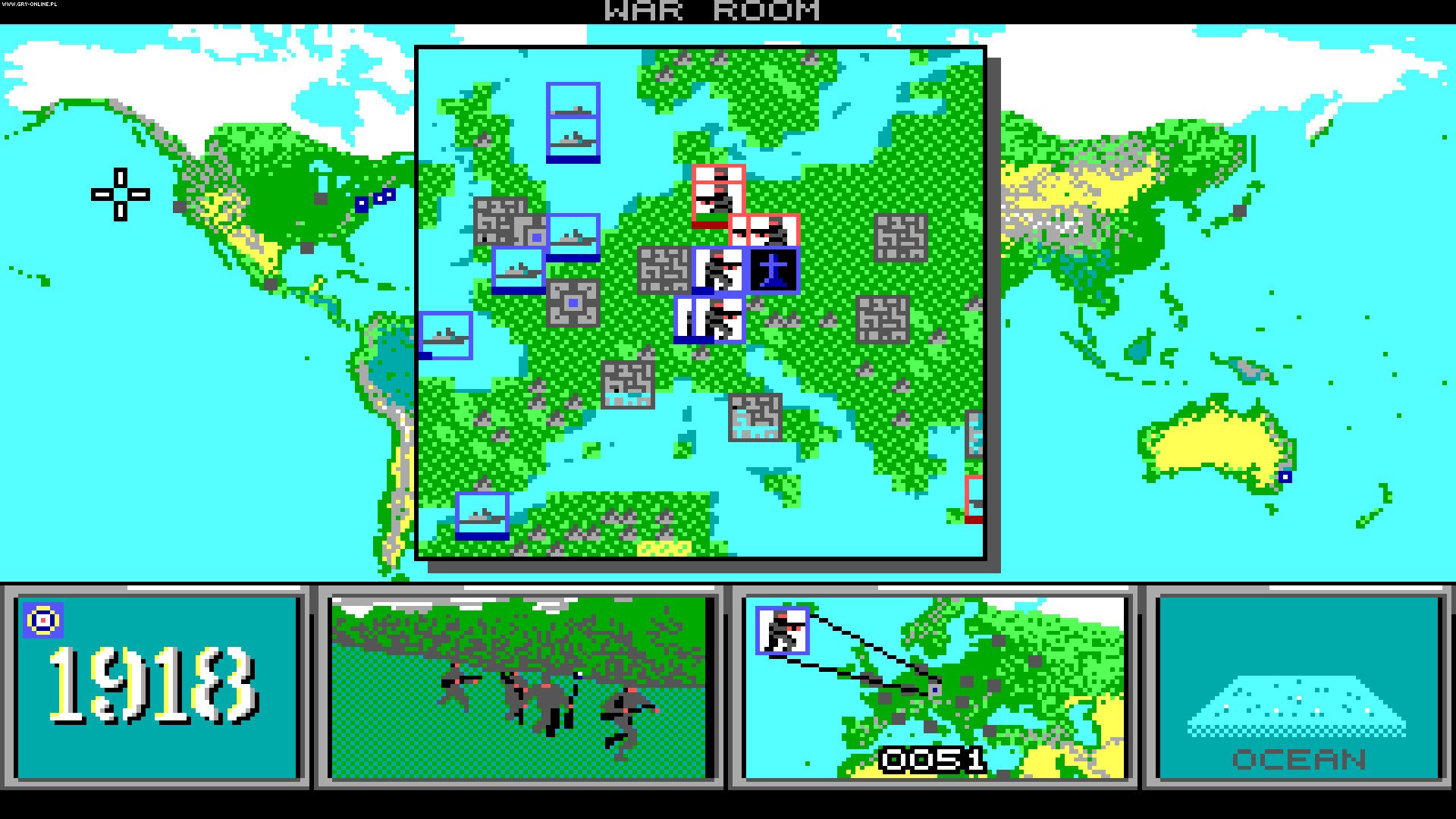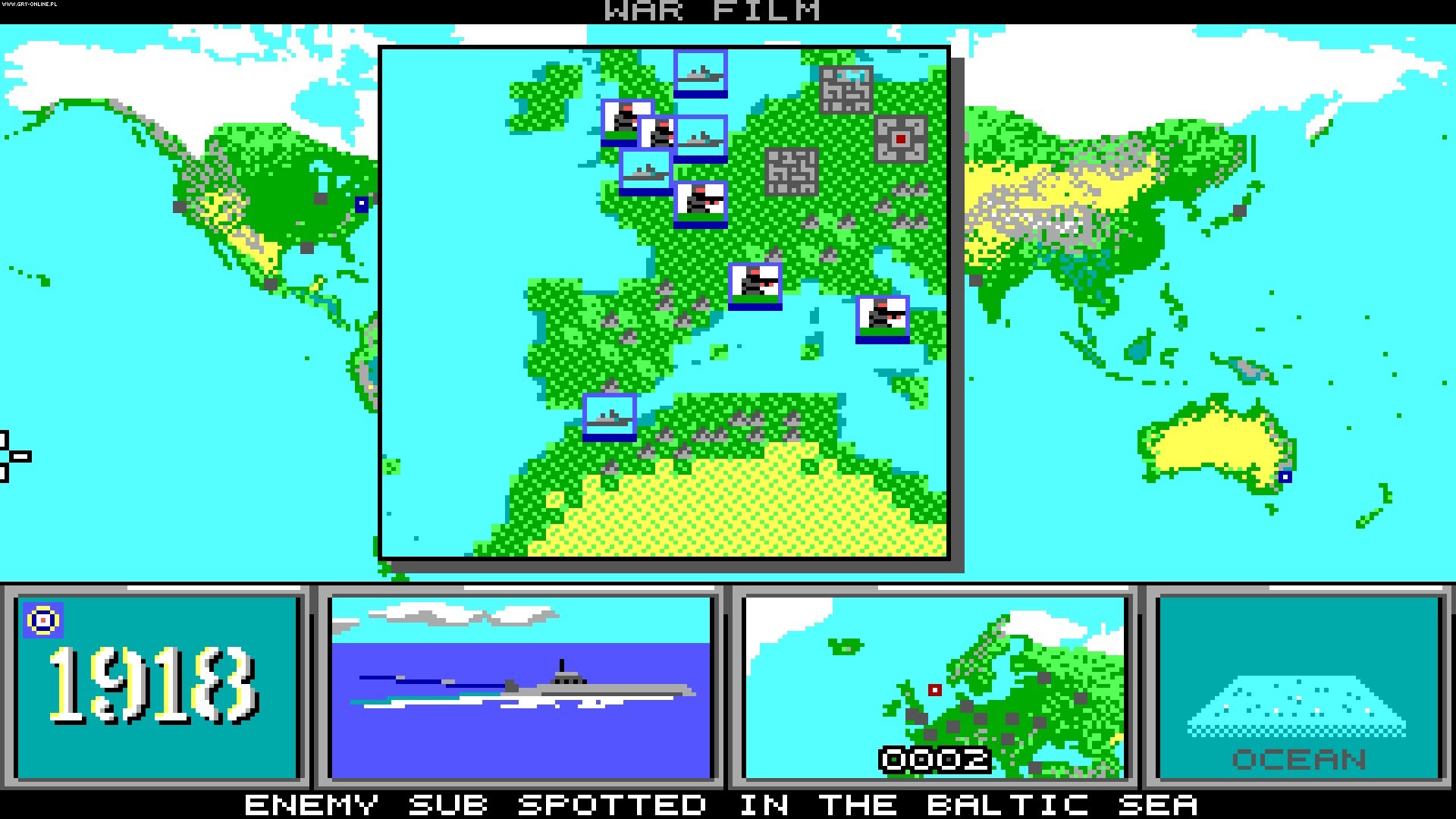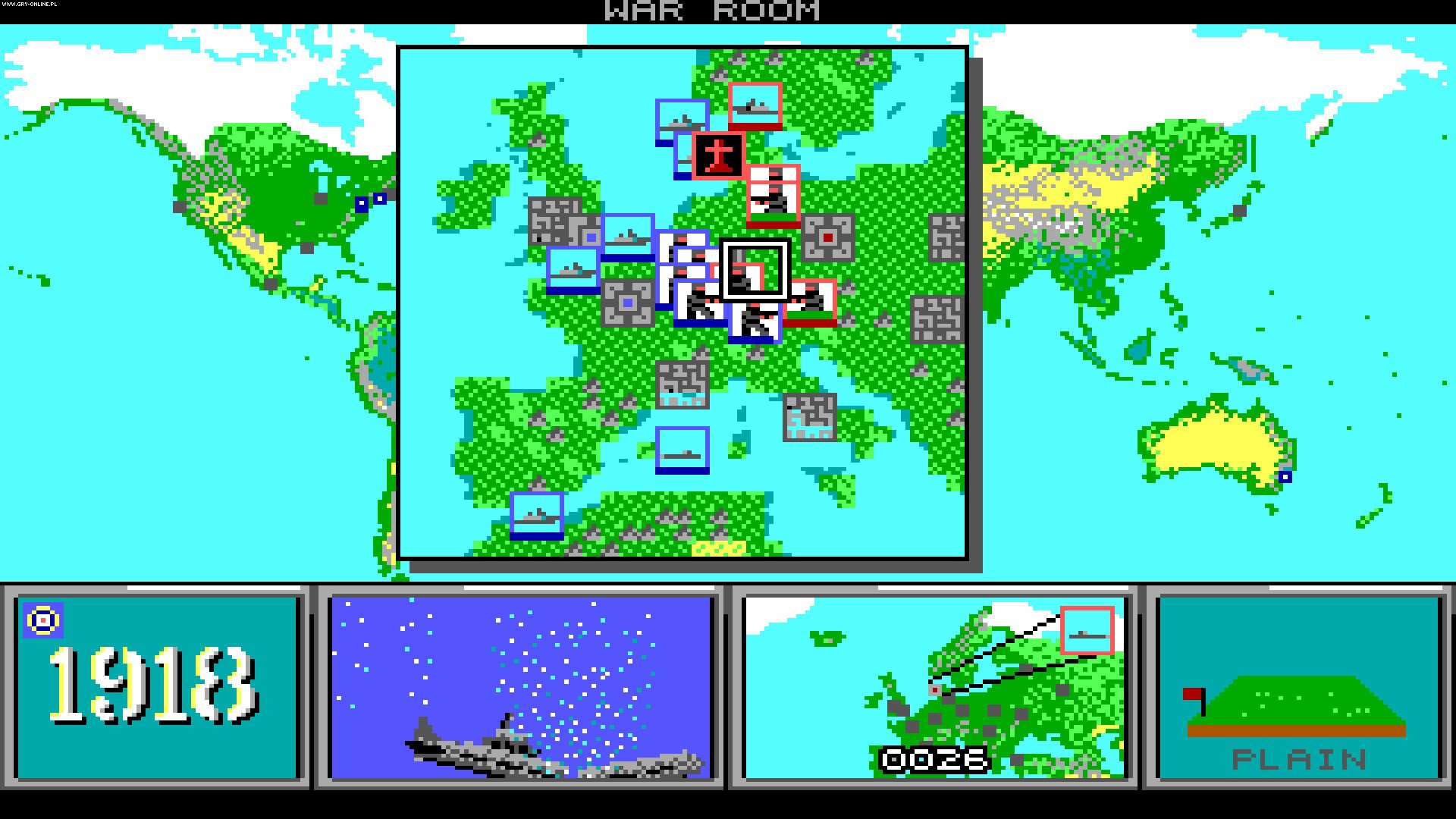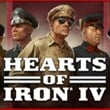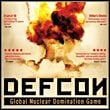The first scenario takes us to the final stage of World War I, the year 1918. The action begins after the fall of tsarist Russia and focuses on the struggle of the Central States and Entente on the Western Front. This scenario is the most suitable starting point for beginner players as the battles take place in a small territory and the available types of units are limited to infantry and naval forces (including submarines).
The Second World War scenario throws us to the year 1942, when the forces of the Third Reich are slowly approaching Moscow and the United States decides to join the conflict. In this mode, the scope of warfare is significantly expanded, including East Asia, where Axis forces are represented by Japanese troops. The player also receives new types of units: tanks, carriers and aircraft.
Scenario hree takes us back to the Cold War, the year 1986. It depicts a hypothetical situation in which tensions between East and West led to the outbreak of the Third World War. In this mode, the players take on the role of Commanders of the Warsaw Pact and NATO and wage a total war using all the units and capabilities offered by the game (atomic bombs, satellite reconnaissance, etc.).
The fourth scenario starts in 2023. This mode is very similar to the previous one, but instead of a rigid division into Soviet and NATO blocks, we get two factions with randomly generated territories. The players also do not receive any starting forces - starting units are bought at players' own discretion with the funds they hold.
The last, fifth scenario takes place in an undefined future, in which the Earth is a post-nuclear wasteland. The only existing centers of civilization are sovereign city-states. Each player starts with only one such city, acting as its capital and the first base. No information about the opponent is available at the beginning of the game.
Mechanics
Command HQ is a real-time strategy game. The player takes control of one of the two factions and with the help of land, sea and air forces tries to defeat the opponent. The session ends when one of the players occupies all the larger cities belonging to the opponent.
The tactical situation is shown on the world map, which we can zoom in to give precise orders to our units. As we play the chief commander of all the forces of our faction, we do not give orders to single tanks or infantry units, but to entire armies and fleets. So if we see on the map a unit marked as an aircraft carrier, it does not mean one ship of this type, but a whole task force, including escorts. Despite its large scale, the game offers some methods of micromanagement, for example through the mechanics of flanking. When our army enters the battle with enemy forces, they will rotate to each other with "fronts", meaning that any other unit attacking the fighting army from behind or from the side will deal additional damage.
The game offers a total of eleven types of units: infantry, armored forces, submarines, cruisers, aircraft carriers, air squadrons, spy satellites, anti-satellite weapons, intelligence, and foreign support units. Depending on the scenario chosen, not all of them may be available - the commander of Entente will certainly not find an atomic bomb in his arsenal. Some of our troops have interesting characteristics, e.g. the infantry can dig in, which significantly increases its defensive capabilities, and air forces can act as air transport, dropping paratroopers far behind enemy lines. Damaged units can be treated and repaired in allied cities and oil wells, which also act as sources of income. Cities provide the money for which we create new armies and fleets, and oil wells provide the oil that is necessary for the efficient operation of the army and infrastructure.
The game can be accelerated and slowed down by changing the speed factor from 0 to 6. Setting 0 acts as an active pause, enabling us to give orders.
Game modes
The aim of Command HQ devs was offer battles both against AI and other users in multiplayer. The original version of the game from 1991 allowed for multiplayer fun, for example, using an RS-232 cable or dial-up modem. DOS Box version enables us to play over the Internet, while Steam version only offers single-player mode.
For the purposes of the single-player mode, the devs have prepared five AI settings with increasing difficulty levels: Sergeant State Stil, Captain Luke Warm, Colonel Buck Zeal, General Win Moore and Mars God of War.
Technical aspects
As befits a game from the early nineties, Command HQ has a very simple audiovisual setting. Units are represented by clusters of pixels, and events are communicated to us by simple sounds - there are voice messages, to which we are accustomed by modern RTSs. The game interface, however, was praised for its clear and legible presentation of information and for the innovative use of the mouse at the time to command the units.
